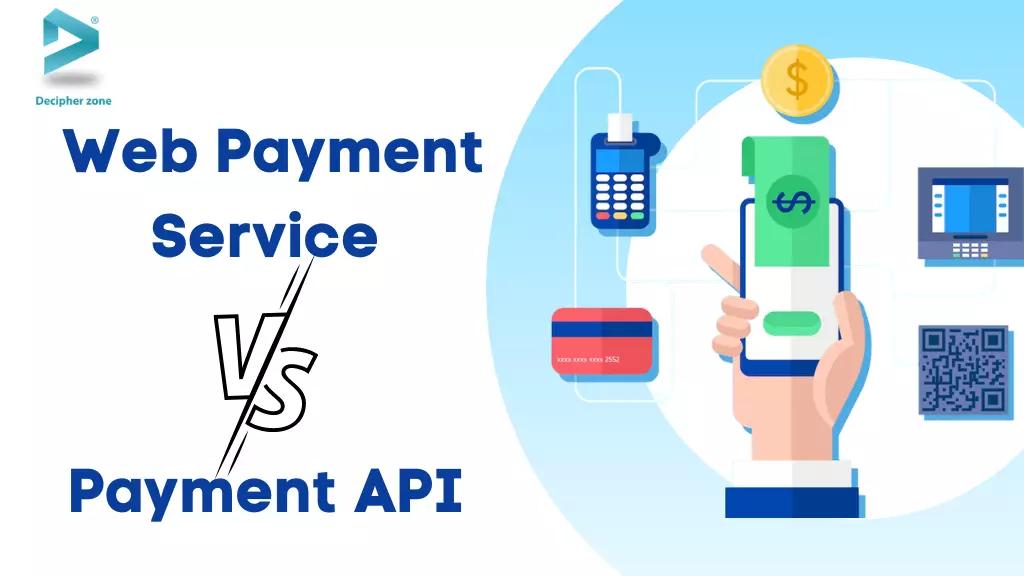The Covid-19 pandemic has changed the world for good. Brick-and-mortar stores have become a secondary means of shopping as people now prefer shopping online.
Ordering something with merely a few clicks is undoubtedly the most convenient thing.
Read: Travel Web Application Development Cost
Businesses are now working in collaboration with couriers. They get everything delivered to your house within a few working days. Not just that, most businesses now allow online payments as well.
Keeping a lot of cash at home isn't possible, and of course, not a wise thing to do. Therefore, it's good to make online payments instead of paying cash on delivery.
Difference between a Web Payment Service and a Payment API
In this article today, we're going to study different payment options. We'll look into the good old web payment service and the new payment API, so let's get this started.
Web Payment Service
Web payment service has become extremely common these days. As mentioned earlier, most people prefer paying online as they don't like carrying cash. It is mainly why almost all businesses incorporate web payment services on their websites when setting up an online store.
Read: API vs Web Services: The Basic Concept, Examples, and Difference
A web payment service manages the transfers of funds from buyers to merchants who own e-commerce websites. It allows people to use both credit or debit cards and transfers the money directly into the merchant's account.
Not to mention, it notifies both the customer and the merchant when a payment is made.
As of now, there are various web payment service providers available out there. The following are a few popular web payment service providers:
PayPal
PayPal is widely used across the globe for online transactions. It is considered to be the safest and fastest way to make online payments and send and receive money.
Read: Top 10 Testing Tools to Consider for Web App Development
Some merchants not only use PayPal on their websites but also in their brick-and-mortar stores. All one needs to do is sign up on PayPal using their email address and add a credit or debit card to their digital wallet.
PayPal would take a day or two to verify the details and after that, you can smoothly make online transactions or shop things online with merely a few clicks.
Apple Pay
Apart from PayPal, another commonly used web payment service is Apple Pay. It works in the same way as PayPal does. It requires you to sign in using your email address and add credit or debit card into your digital wallet.
Apple Pay is one credible web payment service. The only problem is that it only works for Apple devices; thus, it won’t be wrong to say that it’s restricted compared to others.
Samsung Pay
Speaking of Apple Pay, how can one forget about Samsung Pay? A mobile and web payment service, Samsung Pay offers smooth online transactions for Samsung as well as other android users.
Read: Best Cybersecurity Practices For Your Business
Though it isn’t as common as Apple Pay, it’s sure to take the lead in a few years because of better availability and less restrictions.
Dwolla
Dwolla is one of the most flexible web payment services out there. It has many integrations. It can handle recurring charges, multiple-stage interests, installment payments, and whatnot.
The best part of the story is that it's extremely cost-effective for the merchant, costing less than $30 a month with 0.5% per transaction. It also offers time tracking, which benefits your business by providing sheer convenience to all your customers.
Payment API
Now that we've established what online payment is and how web payment service works, let's check out the payment API (Application Programming Interface).
If you’re a part of the e-commerce world, you must have heard the term ‘payment API.’ It’s relatively new and making rounds these days with its growing popularity.
It enables business owners to seamlessly manage their online payments by optimizing the process of payment.
Furthermore, it does not only benefit the merchant but customers as well by making the entire process faster and easier. Apart from facilitating online payments, an API also helps streamline the process of refunds.
Read: Top 5 Payment Gateways for your Web Application
It instantly issues refunds for online payments. Therefore, it is considered the safest payment method as your money remains secure throughout the process. Also, payment APIs are not just about credit or debit card payments. Yes, they offer more than that.
With payment APIs, you can also make digital wallet payments and direct bank transfers. It allows you to add credits to your digital wallet and use it anytime you want.
Read: The Future of Banking with the Growth of Technology
It also has an option to directly transfer the amount to the merchant's bank account using your banking app. Not to mention, these services are for both local and international customers.
On top of that, it provides real-time tracking on orders as well as transactions. Once you make the payment, you can track your money until it's deposited into the merchant's bank account and the order is confirmed.
After that, you can continue tracking your order until received. In other words, a payment API streamlines the entire process of online shopping, making it safe and convenient for you.
The Takeaway
Winding it up, I'd say web payment services is an umbrella term used for different payment service providers while payment API is a payment interface that connects one device to the other and makes online payments more safe and secure.
Running an e-commerce site, both terms are used again and again, and of course, for the right reasons.

